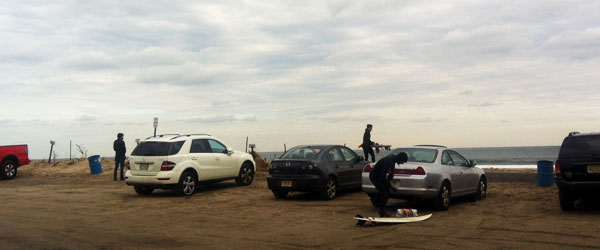Sandy repairs continue: North End dunes to be replenished
College students to spend spring break planting dune grass in Asbury
College students and local volunteers will work to replenish the dunes on the North End beach at the end of the month. The dunes were decimated by Hurricane Sandy on Oct. 29, 2012.
The volunteers need to work fast — the unofficial deadline for planting new dune grass is April 1 each year, according to organizer Tim Donnelly.
Donnelly attended the Feb. 20 council meeting to ask the governing body whether the city could help replenish the dunes by the end of March. Last week, city officials agreed to bring in the volunteers to plant the grass and install snow fencing.
The fencing and dune grass are being donated by the Home Depot Foundation, Donnelly said.
After that, wind will cause the dunes to build themselves back up over a period of about three years, he said.
The volunteers are coming from Rutgers University, Montclair University, NJIT and the US Naval Academy, Donnelly said. Organizers may also invite locals to volunteer, but there may be enough volunteers already.
Previously, there were less than 500 feet of dunes at North End beach, Donnelly said. The new fencing will be installed over about 2500 feet, in hopes that the dunes will extend all the way to the end of the boardwalk, Donnelly said, with a space for entrance to the beach.
The volunteers will also install fencing and dune grass on the western side of the North End parking lot, Donnelly said. He hopes all the North End dunes will become “lush with green vegetation, not just a pile of sand on the beach,” he said.
Donnelly hopes to involve surfers, fishermen and dog owners in the dunes’ development, as those three groups use the North End beach the most. He will speak to officials from the Surfers Environmental Alliance and the Asbury Park Fishing Club, as well as the owner of Dawg Joint, a store for pet owners on Bangs Avenue.
Another system of dunes exists at the south end of town, bordering the Casino building. Arthur Kill, an Ocean Grover resident, has been instrumental in seeing to those dunes’ continued existence.
About seven years ago, Kill, who lives a few houses down from the dunes, “was tired of seeing people walking on” the dunes, he said, “especially on the Fourth of July with the fireworks. People loved climbing up on that dune and trampling it.”
This is a danger to the dune grass’s root systems, which anchor the sand, Kill said.
After Hurricane Sandy, the dunes at the southernmost end of the city’s beach shifted, Kill said. The contractors tasked with cleaning the beach in the storm’s aftermath “dumped [the sand] back in where it was supposed to go,” Kill said, “and put snow fencing around it.”
Some of the dune grass donated by the Home Depot Foundation will be used for this dune system as well, Kill said. He also hopes to plant goldenrod, eastern prickly pear cactus and beach rose, which are native to the region.















